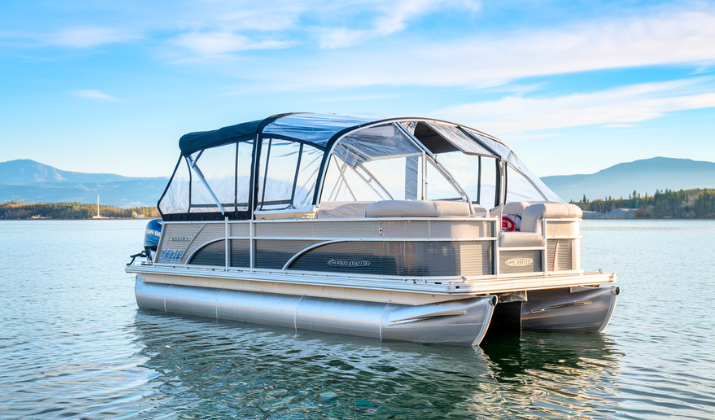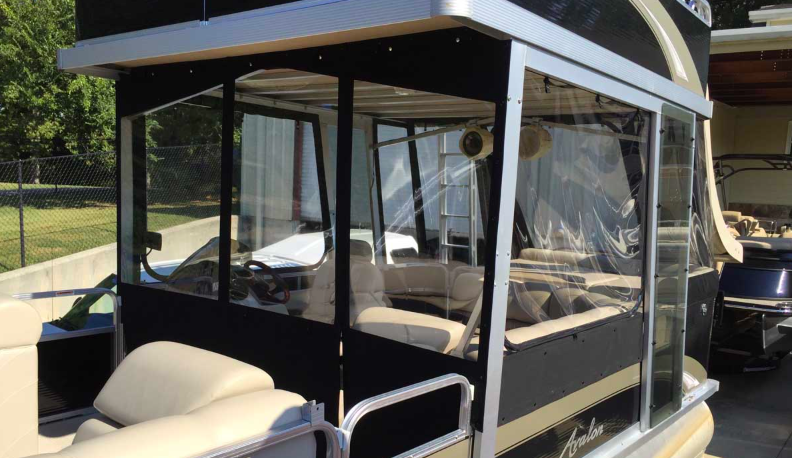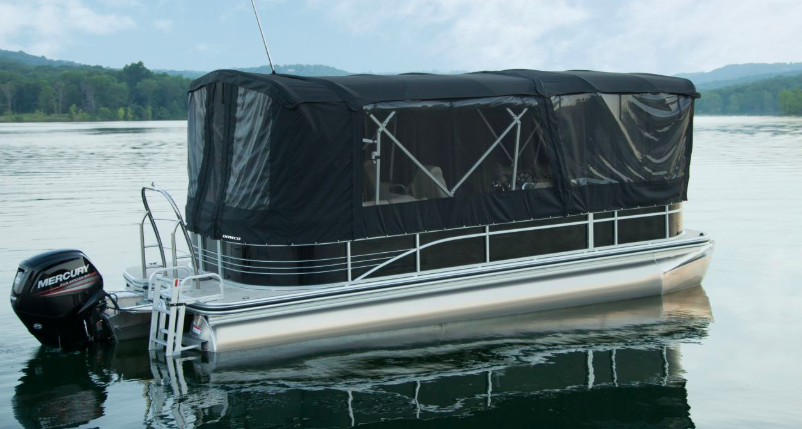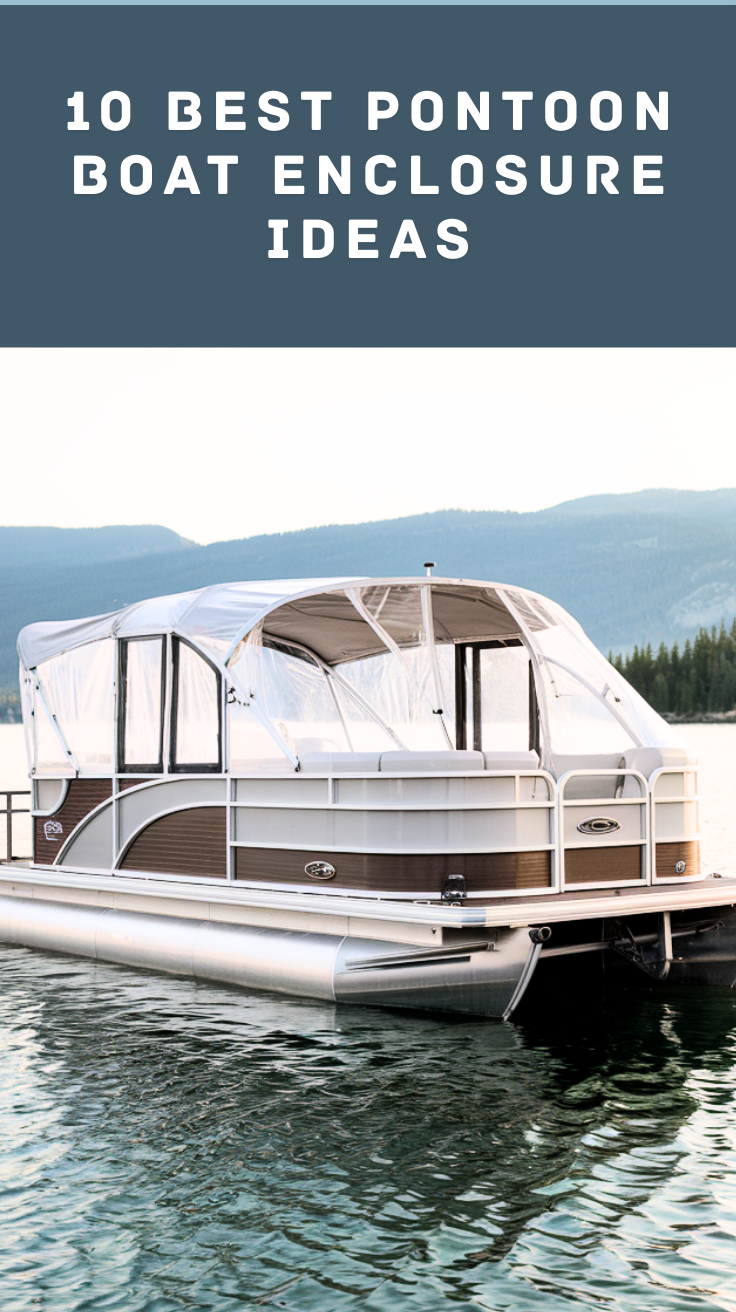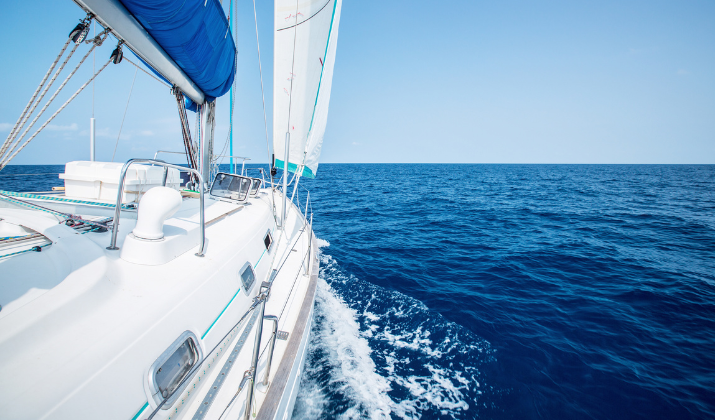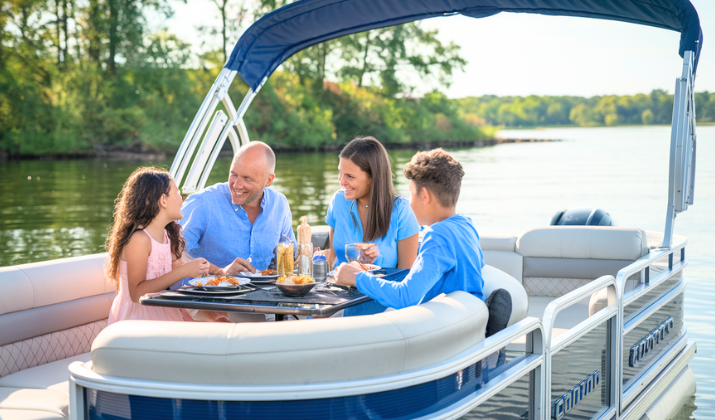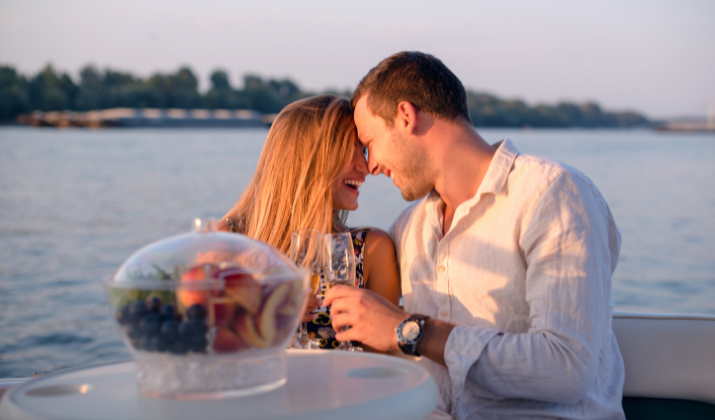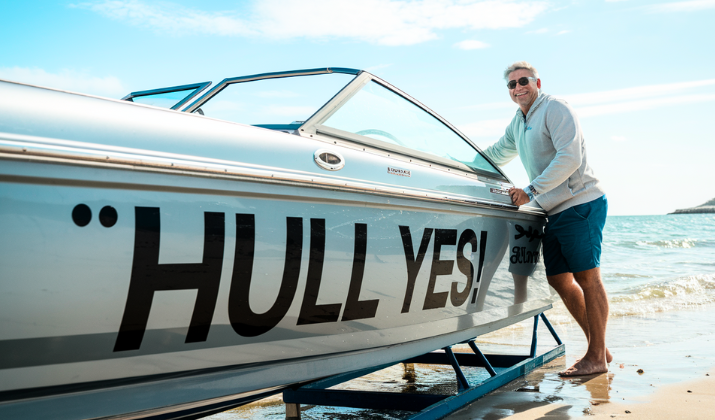Pontoon boats are beloved for their spacious decks, stability, and versatility, making them perfect for family outings, fishing trips, and leisurely cruises.
However, weather conditions can quickly turn your perfect day on the water into an uncomfortable experience.
This is where pontoon boat enclosures come to the rescue. In this post, we will talk about eleven great pontoon boat enclosures that you can consider.
But before we get down to it, let’s learn more about boat enclosures. This is especially going to help the first-time boat owners to understand what are they and how do they help increasing the boat life.
Let’s begin.
Also Read: Most Luxurious Pontoon Boats
What Is a Boat Enclosure and How Does It Help?
A pontoon boat enclosure is a protective covering system designed to shield passengers and equipment from the elements while maintaining visibility and accessibility.
They typically consist of durable fabric panels, clear vinyl windows, and sturdy framework that can be permanently or temporarily attached to your pontoon boat.
Boat enclosures serve multiple purposes. They protect you and your guests from harsh sun exposure, unexpected rain showers, strong winds, and spray from choppy waters.
Beyond weather protection, enclosures extend your boating season by making it comfortable to be on the water during cooler months.
They also provide privacy, reduce noise from wind, and can help keep your boat’s interior cleaner by blocking debris and dust.
Additionally, enclosures can protect your boat’s upholstery, electronics, and other equipment from UV damage and moisture when the boat is not in use.
If you’ve not installed a boat enclosure yet, it’s time to do it now, especially if you love your boat and want it to last long.
Let’s take a look at the enclosure ideas now.
Also Read: Magical Movie Night Ideas On A Pontoon
Best Pontoon Boat Enclosure Ideas
1. Full Canvas Enclosure with Clear Vinyl Windows
The full canvas enclosure is the most comprehensive protection option available for pontoon boats.
This enclosure completely surrounds the boat’s deck area with heavy-duty marine canvas walls and incorporates large clear vinyl windows for visibility.
The canvas material is typically made from solution-dyed acrylic or polyester that resists fading, mildew, and water penetration.
The clear vinyl windows are usually made from marine-grade materials that resist yellowing and cracking over time.
The windows often feature roll-up or zippered sections for easy access and ventilation. The full enclosure typically includes a roof section that connects to the boat’s existing bimini top or creates its own overhead coverage.
Installation involves securing the enclosure to existing hardware points on your pontoon’s rail system and bimini top framework.
Many full enclosures are custom-fitted to specific boat models, ensuring a snug fit that minimizes flapping in the wind.
The option provides maximum weather protection and can transform your pontoon into a floating room that’s comfortable in almost any weather condition.
Also Read: Pontoon Party Ideas
2. Convertible Bimini Top Enclosure
A convertible bimini top enclosure offers the perfect balance between open-air boating and weather protection.
This system starts with a standard bimini top and adds removable side panels that can be quickly deployed when weather conditions change.
The panels typically attach via snaps, zippers, or track systems that allow for easy installation and removal.
The beauty of this system lies in its versatility. On sunny, calm days, you can enjoy completely open boating with just the overhead shade.
When wind picks up or rain threatens, the side panels can be quickly attached to provide instant protection. The panels often feature clear vinyl sections for visibility and solid canvas sections for maximum protection from sun and rain.
Many convertible systems include front and rear panels as well, allowing you to create a nearly complete enclosure when needed.
The panels are designed to fold compactly for storage when not in use, and many come with dedicated storage bags to keep them organized and protected.
Check Out: Pontoon Boats Upkeep
3. Snap-On Side Curtains
Snap-on side curtains represent one of the most popular and practical enclosure solutions for pontoon boats.
These curtains attach directly to your existing bimini top framework using heavy-duty marine snaps or fasteners.
They’re designed to provide protection from side winds, spray, and angled rain while maintaining easy access to the boat’s perimeter.
The curtains are typically made from marine-grade canvas or vinyl materials that resist water, UV rays, and mildew.
Clear vinyl sections are strategically placed to maintain visibility for navigation and situational awareness. Many snap-on curtains feature adjustable ventilation panels or roll-up sections that allow for airflow control.
Installation is straightforward and doesn’t require permanent modifications to your boat. The snaps are usually installed along the bimini top’s frame and the boat’s railing, creating secure attachment points that can withstand wind and movement.
When not needed, the curtains can be easily removed and stored, making them ideal for boaters who want protection available but don’t want permanent enclosure.
Also Read: Pontoon Boat Hacks For Beginners
4. Zip-Up Soft Enclosure Panels
Zip-up soft enclosure panels offer a more refined and weatherproof alternative to snap-on systems.
These panels connect to each other and to the boat’s framework using heavy-duty marine zippers, creating seamless connections that better exclude wind and water.
The zipper system allows for precise fit adjustments and creates a more finished appearance.
The panels are constructed from high-quality marine fabrics that often feature laminated or coated surfaces for enhanced water resistance.
Clear vinyl windows are typically larger than those found on snap systems, providing excellent visibility.
Many zip-up systems include multiple panel configurations, allowing you to enclose just the sections you need based on weather conditions.
The zipper connections create a more rigid structure that’s less likely to flap in the wind, reducing noise and wear.
However, this system requires more time to install and remove compared to snap-on alternatives. The precision fit also means that panels are typically custom-made for specific boat models and bimini top configurations.
Explore: Deck Boat vs Pontoon Boat
5. Hard-Top Enclosure with Removable Panels
Image – Craig’s Marine Canvas
Hard-top enclosures represent the premium end of pontoon boat protection systems.
These enclosures feature rigid overhead panels made from materials like fiberglass, aluminum, or composite materials, combined with removable or sliding side panels.
The hard-top provides superior protection from rain and hail while offering a solid mounting platform for accessories like lights, speakers, or electronics.
The removable side panels are typically made from tempered glass, acrylic, or high-quality vinyl that can be easily installed or removed based on conditions.
Some systems feature sliding panels that can be adjusted for partial protection or full enclosure. The hard-top structure often includes integrated drainage systems to channel water away from the boat’s interior.
Installation of a hard-top system usually requires professional help due to the weight and complexity of the structure.
While more expensive and complex than soft enclosures, hard-top systems provide unmatched durability and weather protection, essentially creating a permanent cabin space on your pontoon.
Also Read: Pontoon Boat Buying Guide
6. Partial Rear Enclosure for Engine Protection
A partial rear enclosure focuses specifically on protecting the boat’s engine area and rear seating from wind, spray, and weather.
This enclosure typically covers the back third to half of the pontoon, creating a sheltered area around the driver’s station and rear passengers.
It’s particularly valuable for boats with outboard motors that need protection from spray and debris.
The rear enclosure usually features a combination of solid canvas panels and clear vinyl windows positioned to maintain visibility for the boat operator.
Many designs include removable or foldable sections that provide easy access to the engine for maintenance and fueling. The enclosure often extends from the bimini top down to the boat’s rear rail system.
This type of enclosure is ideal for anglers who want to protect their fishing equipment and electronics while maintaining open access to the front and sides of the boat for fishing activities.
It’s also popular with families who want to create a protected seating area while keeping the bow area open for activities and movement.
Also Read: Pontoon Boat Brands To Avoid
7. Camper-Style Canvas Enclosure
Camper-style canvas enclosures transform your pontoon boat into a floating camping shelter, perfect for overnight trips or extended stays on the water.
These comprehensive systems typically include not only side panels and windows but also features like screened sections, interior pockets, and sometimes even sleeping area configurations.
The canvas material is usually heavy-duty marine grade that can withstand extended exposure to the elements.
Multiple clear vinyl windows provide 360-degree visibility, while screened sections offer ventilation and insect protection.
Many camper-style enclosures include interior features like gear pockets, cup holders, and hanging loops for organization.
These enclosures often feature multiple access points with zippered doors or panel sections that can be opened independently.
The comprehensive coverage makes them suitable for use in various weather conditions and can significantly extend your time on the water.
Some systems are designed to work with camping accessories like portable toilets, cooking equipment, and sleeping arrangements.
Also Read: Most Expensive Pontoon Boats
8. Winter Storage Enclosure
Image – PDB Magazine
Winter storage enclosures are designed specifically to protect your pontoon boat during extended periods of non-use, particularly during harsh winter months.
These enclosures provide comprehensive coverage that shields the entire boat from snow, ice, UV rays, and debris while allowing for proper ventilation to prevent moisture buildup and mildew.
The materials used for storage enclosures are typically heavier and more durable than seasonal-use enclosures, often featuring reinforced seams, stronger support structures, and materials specifically chosen for long-term outdoor exposure.
Many storage enclosures include integrated ventilation systems with one-way air vents that allow moisture to escape while preventing precipitation from entering.
Installation of winter enclosures often involves additional support structures like center poles or framework to handle snow loads and prevent sagging.
Some systems include access panels that allow you to check on the boat or perform maintenance during the storage period without removing the entire enclosure.
These enclosures can significantly extend the life of your boat’s upholstery, electronics, and other components by protecting them from harsh winter conditions.
Also Read: Pontoon vs Flat Hull
9. Modular Panel System
Modular panel systems offer the ultimate in customization and flexibility for pontoon boat enclosures.
These systems consist of individual panels that can be mixed and matched to create exactly the coverage you need for any given situation. Panels typically include various configurations like solid canvas, clear vinyl, screened sections, and access doors.
The modular approach allows you to start with basic coverage and add panels over time as your needs change or your budget allows.
Each panel is designed to connect seamlessly with others using standardized connection systems like zippers, snaps, or track systems.
This modularity also makes replacement of damaged sections more economical, as you only need to replace individual panels rather than entire enclosure systems.
Many modular systems include specialized panels for specific purposes, such as windshield panels for the driver’s area, privacy panels for changing areas, or equipment access panels for engine or storage compartments.
The system’s flexibility makes it suitable for boats used in varying conditions or for multiple purposes throughout the season.
Also Read: Best Luxury Tritoon Boats
10. Custom-Fit Professional Enclosures
Custom-fit professional enclosures represent the highest quality option available for pontoon boat protection.
These enclosures are professionally measured, designed, and manufactured specifically for your exact boat model and configuration.
Every aspect of the enclosure is tailored to your boat’s dimensions, hardware placement, and intended use.
Professional enclosures typically use the highest quality materials available, including solution-dyed marine canvas, crystal-clear vinyl windows, heavy-duty marine hardware, and reinforced construction techniques.
The fit is precise, eliminating the loose areas and poor fits that can lead to flapping, wear, and weather infiltration.
Many professional enclosure manufacturers offer extensive customization options, including choice of colors, window configurations, access arrangements, and additional features like interior pockets, equipment mounts, or integrated accessories.
The installation often includes professional fitting and adjustment to ensure optimal performance.
While more expensive than off-the-shelf alternatives, custom enclosures provide superior protection, appearance, and longevity.
Also Read: Pontoon Boat Restoration Ideas
Conclusion
Choosing the right pontoon boat enclosure can dramatically enhance your boating experience by extending your season, protecting your investment, and keeping you and your guests comfortable in various weather conditions.
From simple snap-on side curtains for occasional protection to comprehensive custom enclosures that transform your pontoon into a floating cabin, there’s an option to suit every need and budget.
Remember that quality materials and proper installation are crucial for long-term satisfaction and protection.
A well-chosen enclosure system will provide years of enhanced boating enjoyment while protecting your pontoon boat and its occupants from the elements.

